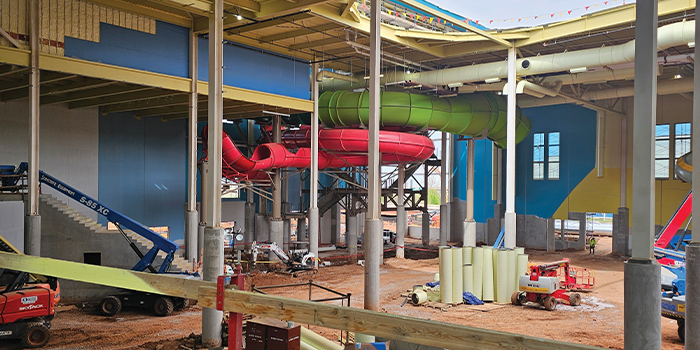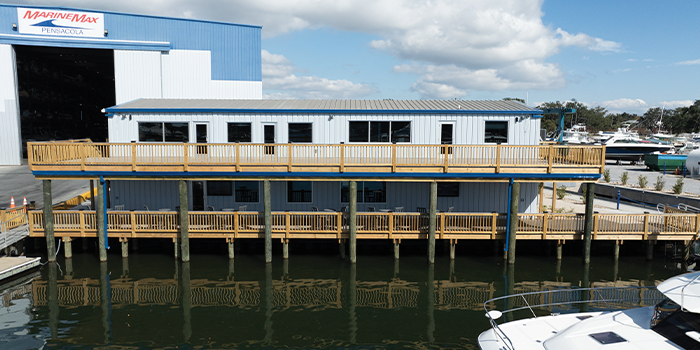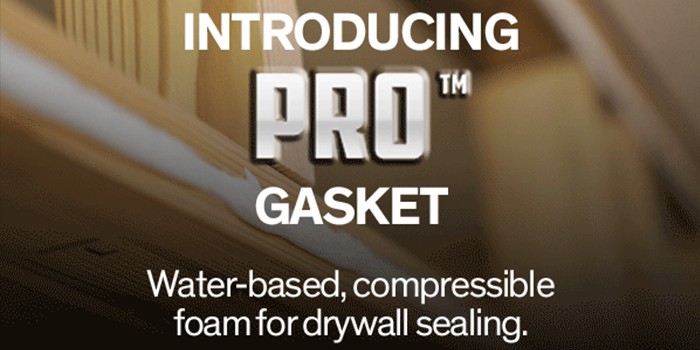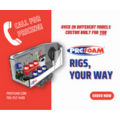Tracks to Comfort


SPRAY FOAM MAGAZINE – The City of Aiken’s Visitor’s Center and Train Museum is situated in Aiken, SC. This area has a wealth of railroad history dating back to a time when the railroad enabled the area’s cotton growers to transport their goods to Charleston, SC. In 1830 a Boston engineer named Alfred Dexter was sent by the South Carolina Canal & Railroad to map a new railroad line from Charleston to Hamburg, SC. It is said that it was due to a love story that enabled this railroad to be built.
Dexter stopped in Hamburg, now known as Aiken County, to start his work. However, after carrying out his research, he deemed the terrain was too hilly and therefore inappropriate for a railroad. That’s until he met Sarah Williams, a daughter of wealthy local plantation owner Capt. W.W. Williams. Williams sought for the railroad to go through his land in that region, and Dexter wanted Sarah’s hand in marriage. Therefore, a deal was struck, and the rest, as they say, is railroad history.
Fast forward 193 years, and the City of Aiken’s Visitors Center and Train Museum are doing their best to fundraise and restore some historical train cars to their former glory to display them at the museum. With their first car remodel project being an old dining car built in the 1910 - 1916 era, by the Pullman Car Company for the Frisco Railroad. This car originally had a steel frame and wood cover like many of the cars built during the transition from wood to steel cars.
Karen Wikert, aka Mrs. Spray Foam, LLC was contacted by Mr. Bill Holland, a General Contractor (GC) hired by the Aiken Train Museum to do the remodel. He hired Karen after he got halfway through the project and became concerned about how to insulate the car the best way possible. The dining car’s original wooden roof is characteristic of the era and was still intact. The roof also has a raised center structure that contains small windows enabling the conductor to open and close it, letting the heat be enclosed or removed as desired. Karen, accompanied by her husband Wesley, a contractor in his own right, headed to Aiken to review the job.

Wesley was particularly excited when they arrived at the museum and he saw the car. Karen explained, “Wesley’s Grandfather, his mother’s dad, John Eaton, had worked for the railroad for 35 years. Sad to say he passed away in 2012, but I’m sure he would have loved this project and been so proud that Wesley was a part of restoring this piece of railway history. Understandably Wesley had all the joy spraying this car and was a real gun hog on this project.”
Karen and Wesley used their rig, which is connected drum to the gun with a Graco Reactor 3 E-30, E1s, a super light internally heated hose, and a Fusion AP with a 42 chamber. After suiting up and with full PPE, they entered the train car. Karen noted, “Stepping into the train car we were hit with a musty damp smell mixed with the smell of freshly cut wood. It was like taking a step back in history and getting a look at how wealthy Americans traveled first class in the late 1800s.”

Wesley and Karen did a lot of prep work to protect the original wood from any overspray. The windows were every few feet on the raised portion of the roof and like much of the rest of the interior, they were also taped off for protection. Mr. Holland had already installed most of the woodwork on the siding when the condensation started, and he knew he needed a superior insulation. Wesley applied one and a half to two inches of Victory Polymers closed-cell foam to the 780 sq. ft. project. The foam was applied to the metal roof assembly, including the raised roof portion and curved roof/wall junction. The back six feet of the car was walled off for a maintenance closet and was also sprayed with two inches of closed-cell foam.
Spraying the car took roughly two short days, after which, Mr. Holland then covered the foam with wood paneling and the car’s trim to match the original interior. Mr. Holland was so happy with the results of the spray foam, that he hired Karen and Wesley to foam his barn a few weeks later, and even referred them to his neighbor. As for Karen and Wesley, they enjoyed this unique project so much that they submitted it for a National Industry Excellence Award to be chosen at the 2024 Spray Foam Conference and Expo hosted by the SPFA in Las Vegas, NV. They were picked as finalists and at the time of writing this article, had just won the SPFA’s National Industry Excellence Award for Building Enclosure SPF Less Than 40,000 sq. ft.
The Spray Foam Magazine team would like to congratulate Mrs. Spray Foam on this noteworthy achievement. Both your enthusiasm, skill, and respect were poured into this historic project and recognition is well deserved.
The City of Aiken’s Visitors Center and Train Museum aim to raise additional funds to complete the interiors of more historical train cars. Now seen as historic artifacts, these cars are an important part of U.S. railroad history and with the superior insulation spray foam can offer, they will be well insulated for years to come. Proving that SPF now has a historical train car project to add to its track record!
For use by SprayFoamMagazine.com & Spray Foam Magazine
Disqus website name not provided.









































